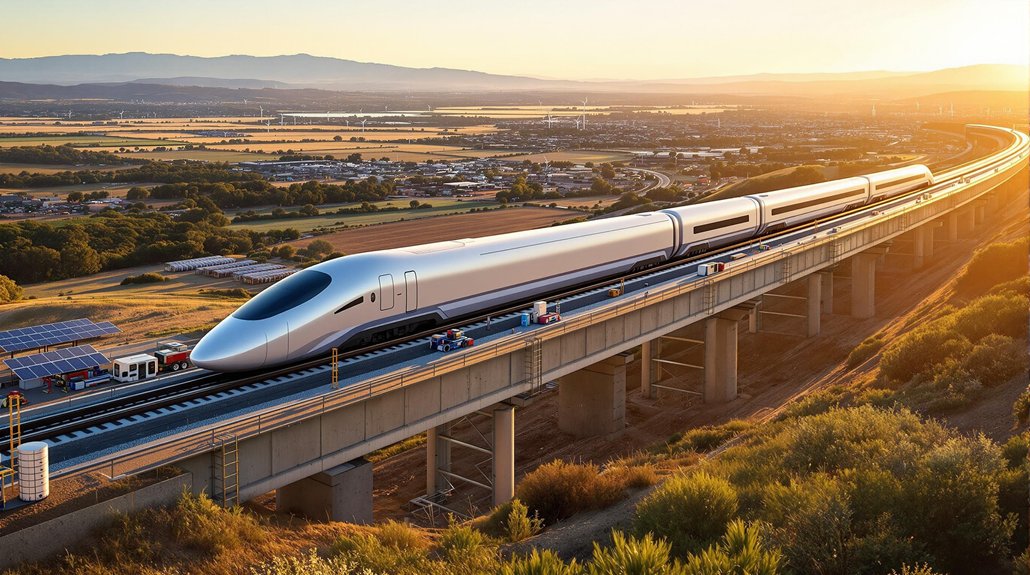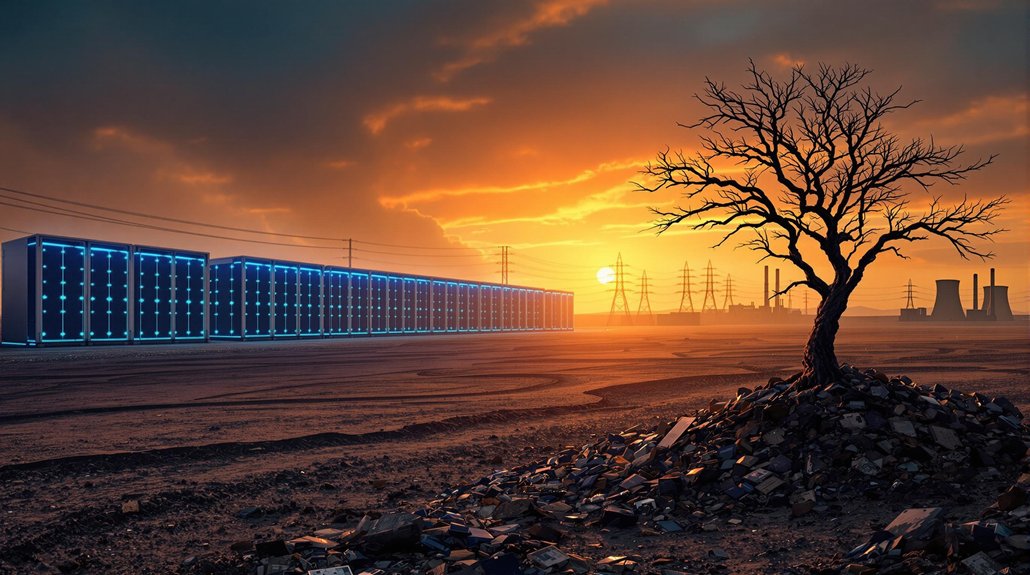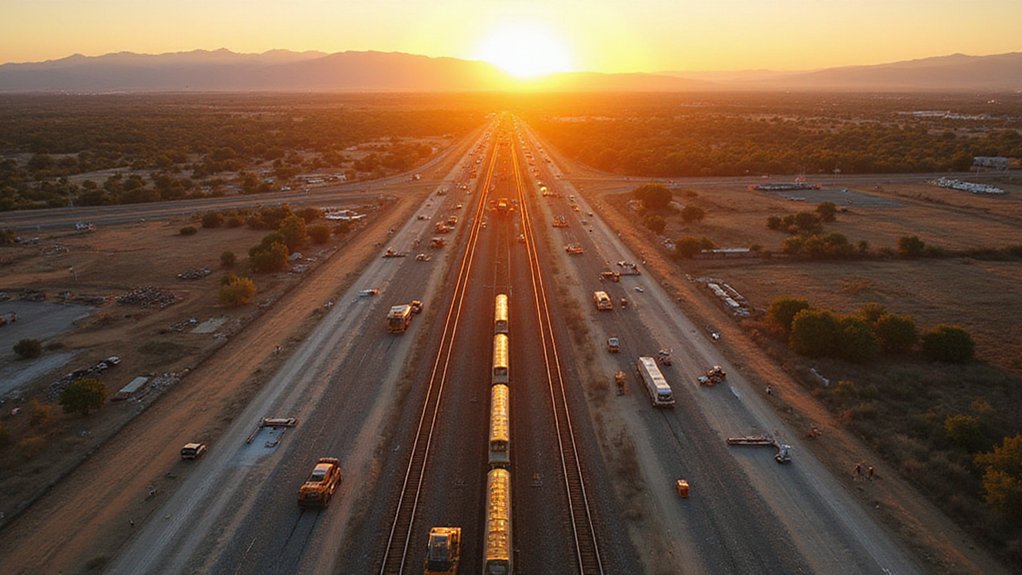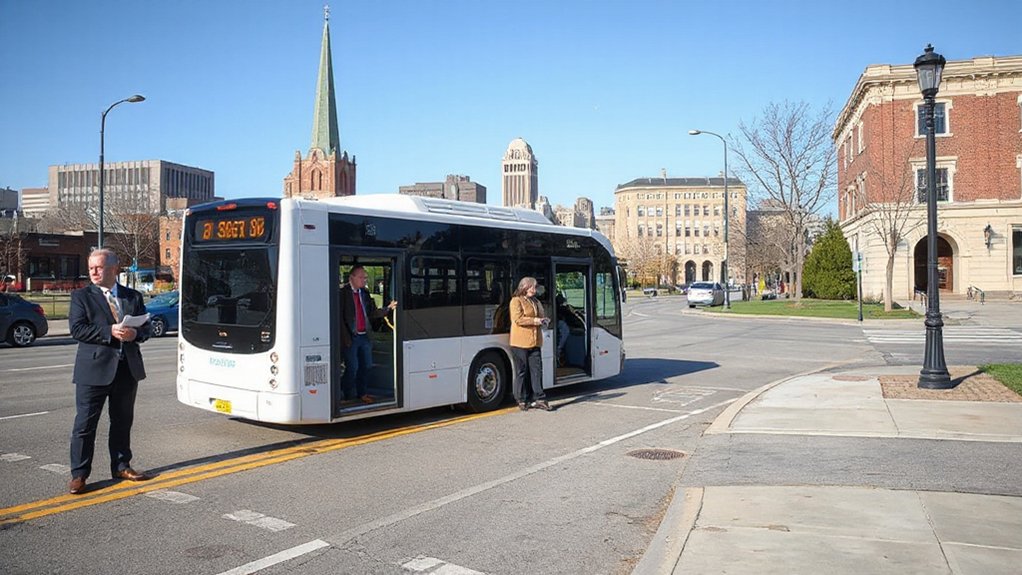California’s high-speed rail project is reducing carbon emissions even before completion. Construction teams have already avoided over 570,000 pounds of pollutants, with 95% of non-hazardous waste diverted from landfills. The project has sequestered 527,707 metric tonnes of carbon and protected 4,400 acres of natural habitat. Once operational, the bullet train will connect San Francisco to Los Angeles in under three hours using 100% renewable electricity. The environmental benefits extend beyond just cleaner transportation.
As California pushes toward its ambitious climate goals, the state’s high-speed rail project stands to play a critical role in reducing greenhouse gas emissions. Even before completion, the project is already making environmental impacts through its construction practices and early infrastructure developments.
The rail system is projected to cut between 84 and 102 million metric tons of carbon dioxide equivalent over its first 50 years of operation. Some estimates suggest the total reduction could reach as high as 142.6 million metric tons throughout the project’s lifespan.
Construction teams have already avoided 110,000 pounds of pollutants in 2023 alone, with over 570,000 pounds avoided since building began. They’ve diverted 95% of non-hazardous waste from landfills, recycling or reusing more than 306,000 tons of materials.
The 18 completed grade separations are already reducing vehicle idling time at crossings, cutting emissions even before the trains start running. These separations improve community safety while decreasing pollution from cars waiting at railway crossings.
When operational, the bullet train will connect San Francisco and Los Angeles in under three hours. This speed makes rail a competitive alternative to flights and car travel, which produce notably more emissions per passenger.
The system will run on 100% renewable electricity, fundamentally eliminating operational carbon emissions. The train’s energy efficiency is enhanced by its steel wheels on steel rails, creating minimal friction compared to rubber tires on asphalt. This clean energy approach aligns with California’s overall strategy to reach carbon neutrality.
Beyond emissions reductions, the project has protected over 4,400 acres of natural habitat and more than 3,400 acres of agricultural land. These conservation efforts help offset the environmental impacts of construction and have already sequestered 527,707 metric tonnes of carbon.
The high-speed rail isn’t just about transportation – it’s creating jobs and investing in disadvantaged communities. This economic development brings social benefits alongside environmental ones.
California’s bullet train demonstrates how infrastructure projects can address climate change while still in progress. By implementing sustainable practices before the first train runs, the project is already helping California move toward a lower-carbon future. The rail initiative reflects a global shift toward renewable energy, which currently accounts for 29.1% of electricity generation worldwide.








